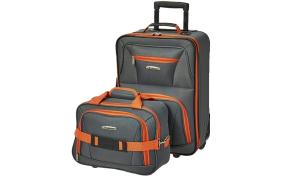
Have you ever wondered why there is such a variety of knives in your knife set? Maybe you always use the same two knives when you chop anything from fresh tomatoes to cooked sirloin steak, or maybe you just use whatever is clean. It might come as a surprise to you, but each of your knives serves a specific purpose in your kitchen activities and following this knife guide could really maximize your chopping, slicing and peeling.
Bread Knife: This knife has a thick blade and is used for cutting bread. Imagine that! The blade is typically 8 or 9 inches in length and is serrated for cutting through a tough crust. The serrations are usually too large and deep to cut fruit and vegetables effectively.
Videos by PopCulture.com

Fillet Knife: The fillet knife is similar to the bread knife in shape, but it is thinner, longer and more flexible, making it ideal for cutting and skinning fish. (via Knife Depot)

>> Read more: The Top 5 Knives You Need In Your Kitchen
Chef’s Knife: Here is arguably the most important knife in your collection. This gem is quite the overachiever and can be used to mince, chop, slice and cut all kinds of things including vegetables, meat, garlic and herbs. Its versatility makes it the knife you will likely use most often. You can get the chef’s knife in whatever length feels comfortable to you, usually from 5 to 10 inches long. The Japanese version of this knife, the Santoku, is a bit wider but just as useful.

Carving Knife: The long blade and pointed tip on this knife make it great for a clean cut when cutting meat. They are generally 8 to 14 inches long with a thinner blade, which makes it susceptible to damage if you chop with this one instead.

>> Check out this article for 13 Ways to Be a Better Cook.
Utility Knife: This knife is also known as a sandwich knife and is used for miscellaneous cuts. Ranging from 4 to 6 inches long, the utility knife sits between a paring knife and a chef’s knife. It’s a little more convenient to cut and slice fruits and vegetables because it’s a little smaller and more manageable. (via Consumer Reports)

Steak Knife: These are your typical dining knives. You probably have several steak knives with a thin, 4 to 6 inch blade, used for cutting meat into bite-sized pieces.

>> Click here to find more kitchen necessities you shouldn’t go without.
Paring Knife: Paring knives are essential to your collection. It usually has a thin blade that is 3 to 4 inches long and tapers to the point. Use this knife for intricate cuts when you want more control over the knife.

Whatever the action, there’s a knife for it. Consider getting a little more familiar with your knives and their uses because sometimes using the wrong knife could result in damage and could potentially be dangerous. Check out this graphic from Life Hacker to learn more about your knives, how to use them and knife lingo to help you in the kitchen.
>> Read more: 12 Must-Have Kitchen Appliances For a Healthy Lifestyle





